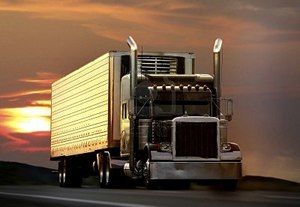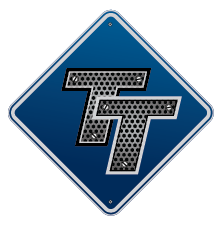Rookie Trucker
Topic 32419 | Page 2
G-Town says:
“Right turn on red after slowing down?”
This can’t be for real… I’m taking the weekend off… I need a break from the latest round of foolery.
My failed attempt at an HOS teaching moment regarding Canadian rules falls flat, but BK's post about fueling off duty gets the legs of a gazelle.
Ok, Chief. My EDL let’s me log off duty while I’m fueling. Please explain this to me. And no hablo espaniol lol. N
HOS:
Hours Of Service
HOS refers to the logbook hours of service regulations.OWI:
Operating While Intoxicated

Man, you guys are a tough nut to crack. Reminds me of the "teachers" in trucking school that taught me nothing. I learned from the other students not them. Guys mostly just out of prison trying to reform themselves. I am not one of these, but we created a bond because we all had the same goal.
Why would it matter what state I'm in? I'm on the East Coast near NYC. I answered my own question by having to drive downtown in rush hour traffic and playing with the truck and gears. School of hardknocks. Dropped the load and kept on moving. I wish I could go OTR (even though I do travel to different states most days) would be a helluva lot easier driving on highways all day long. I figure I am getting a lot more experience having to do both city and highway driving all wrapped into one.
Seriously though, this whole keep sh*t a secret and let the guy learn thing isn't very helpful. When I'm on the road there is a feeling of looking out for other truckers...not so much here.
Welcome, Dave.
Practice. That's really what it's all about. You should be downshifting for the entirety of your deceleration while approaching the light. At any given moment you should already be in the gear you need to be in if the light were to suddenly turn green. The only exception to this is when you are within the final trailer length before coming to a complete stop, you can then depress the clutch all the way. Then if the light turned green, yes you would pop in neutral, hit your splitter if needed, and drop into third or fourth depending on your roll.
It gets easier. Just keep practicing.
Thanks for the tips. When you are in that situation where you are ready to stop and light turns green and you pop it into neutral...is the mindset just like floating the gears? Rev it and pop it into 3rd or 4th? Or do you use the clutch? Just seems weird because feet are already on brake and clutch.
As far as running stop signs other people were saying, I was just trying to explain some way that people would understand. I don't run them lol However, I do a lot of city driving and it is obviously not all cut and clean like on a CDL test or something. Do what you gotta do.
Thanks again.
Hey, Dave ~
No, it's not 'cut and dry;' at all.. but laws of the land pretty much are. I'm not getting into the proper 'gear stuff' with you, because many long time drivers get their own set system, as the years and miles tick on. It varies, and is more RPM's and engine specific.
Regarding the rules on 'right on red...' See, I grew up in FL, and then there's my cousin in Cali . . . so many different rules and ideologies.
If you'd add your state (at least !) to your location, people here in the know, sure could help more. Many rules, laws, etc .. re: trucking (as you'll see; tandems , kingpins, etc...) vary widely.
Best to ya!
~ Anne & Tom ~
CDL:
Commercial Driver's License (CDL)
A CDL is required to drive any of the following vehicles:
- Any combination of vehicles with a gross combined weight rating (GCWR) of 26,001 or more pounds, providing the gross vehicle weight rating (GVWR) of the vehicle being towed is in excess of 10,000 pounds.
- Any single vehicle with a GVWR of 26,001 or more pounds, or any such vehicle towing another not in excess of 10,000 pounds.
- Any vehicle, regardless of size, designed to transport 16 or more persons, including the driver.
- Any vehicle required by federal regulations to be placarded while transporting hazardous materials.
OTR:
Over The Road
OTR driving normally means you'll be hauling freight to various customers throughout your company's hauling region. It often entails being gone from home for two to three weeks at a time.
Tandems:
Tandem Axles
A set of axles spaced close together, legally defined as more than 40 and less than 96 inches apart by the USDOT. Drivers tend to refer to the tandem axles on their trailer as just "tandems". You might hear a driver say, "I'm 400 pounds overweight on my tandems", referring to his trailer tandems, not his tractor tandems. Tractor tandems are generally just referred to as "drives" which is short for "drive axles".
Tandem:
Tandem Axles
A set of axles spaced close together, legally defined as more than 40 and less than 96 inches apart by the USDOT. Drivers tend to refer to the tandem axles on their trailer as just "tandems". You might hear a driver say, "I'm 400 pounds overweight on my tandems", referring to his trailer tandems, not his tractor tandems. Tractor tandems are generally just referred to as "drives" which is short for "drive axles".
When you are in that situation where you are ready to stop and light turns green and you pop it into neutral...is the mindset just like floating the gears? Rev it and pop it into 3rd or 4th? Or do you use the clutch? Just seems weird because feet are already on brake and clutch.
You can just rev it up and pop it into gear without the clutch. The only time you must use the clutch is on a CDL exam or if you're with a trainer that insists you use it.
CDL:
Commercial Driver's License (CDL)
A CDL is required to drive any of the following vehicles:
- Any combination of vehicles with a gross combined weight rating (GCWR) of 26,001 or more pounds, providing the gross vehicle weight rating (GVWR) of the vehicle being towed is in excess of 10,000 pounds.
- Any single vehicle with a GVWR of 26,001 or more pounds, or any such vehicle towing another not in excess of 10,000 pounds.
- Any vehicle, regardless of size, designed to transport 16 or more persons, including the driver.
- Any vehicle required by federal regulations to be placarded while transporting hazardous materials.
According to both of my trainers (CDL school & Company), the clutch is for starting the engine, coming to a stop, controlling your backing, and taking off from a stop. The whole DC vs Floating is an issue that gets debated to death. I was taught to float and that is how I drive. That said, do what you are comfortable with after playing around with both methods. I use the clutch to pop the gears out between floats (particularly downshifting) because I don't find bumping the throttle to slide out of gear into a lower gear as natural. I still rev the engine and float down accordingly. Just a personal preference.
As far as coming to a stop and not losing momentum if traffic picks back up, start downshifting early, pay attention to stale lights (long greens), look ahead at traffic, and get down as low as you need to go. If it gets to where you are almost at a stop, get it in 2nd or 3rd and learn the friction zone of you clutch. You might stall here and there (happens to everyone when they start) but keep practicing. Learning how to manage gears in stop and go traffic was, at least to me, the hardest part of learning a 10 / 13 speed. I have no doubt you will develop a rhythm in no time.
CDL:
Commercial Driver's License (CDL)
A CDL is required to drive any of the following vehicles:
- Any combination of vehicles with a gross combined weight rating (GCWR) of 26,001 or more pounds, providing the gross vehicle weight rating (GVWR) of the vehicle being towed is in excess of 10,000 pounds.
- Any single vehicle with a GVWR of 26,001 or more pounds, or any such vehicle towing another not in excess of 10,000 pounds.
- Any vehicle, regardless of size, designed to transport 16 or more persons, including the driver.
- Any vehicle required by federal regulations to be placarded while transporting hazardous materials.
Clutch neutral clutch gear still rings in my head. My cdl instructor was laid back and super chill. However it seemed as if teaching a student dc the first time it stressed him out. As if he was gonna die soon. "Clutch neutral clutch gear"

CDL:
Commercial Driver's License (CDL)
A CDL is required to drive any of the following vehicles:
- Any combination of vehicles with a gross combined weight rating (GCWR) of 26,001 or more pounds, providing the gross vehicle weight rating (GVWR) of the vehicle being towed is in excess of 10,000 pounds.
- Any single vehicle with a GVWR of 26,001 or more pounds, or any such vehicle towing another not in excess of 10,000 pounds.
- Any vehicle, regardless of size, designed to transport 16 or more persons, including the driver.
- Any vehicle required by federal regulations to be placarded while transporting hazardous materials.

Dave S wrote:
M
Man, you guys are a tough nut to crack. Reminds me of the "teachers" in trucking school that taught me nothing. I learned from the other students not them.
Seriously though, this whole keep sh*t a secret and let the guy learn thing isn't very helpful. When I'm on the road there is a feeling of looking out for other truckers...not so much here.
Dave I think you received some good advice here. How do we remind you of teachers who taught you nothing? What secret have we kept from you? Please help us understand where we missed the mark in attempting to assist you.
New Reply:
New! Check out our help videos for a better understanding of our forum features

















Preview:








 TT On Facebook
TT On Facebook
Hey, Dave ~
No, it's not 'cut and dry;' at all.. but laws of the land pretty much are. I'm not getting into the proper 'gear stuff' with you, because many long time drivers get their own set system, as the years and miles tick on. It varies, and is more RPM's and engine specific.
Regarding the rules on 'right on red...' See, I grew up in FL, and then there's my cousin in Cali . . . so many different rules and ideologies.
If you'd add your state (at least !) to your location, people here in the know, sure could help more. Many rules, laws, etc .. re: trucking (as you'll see; tandems , kingpins, etc...) vary widely.
Best to ya!
~ Anne & Tom ~
CDL:
Commercial Driver's License (CDL)
A CDL is required to drive any of the following vehicles:
Tandems:
Tandem Axles
A set of axles spaced close together, legally defined as more than 40 and less than 96 inches apart by the USDOT. Drivers tend to refer to the tandem axles on their trailer as just "tandems". You might hear a driver say, "I'm 400 pounds overweight on my tandems", referring to his trailer tandems, not his tractor tandems. Tractor tandems are generally just referred to as "drives" which is short for "drive axles".
Tandem:
Tandem Axles
A set of axles spaced close together, legally defined as more than 40 and less than 96 inches apart by the USDOT. Drivers tend to refer to the tandem axles on their trailer as just "tandems". You might hear a driver say, "I'm 400 pounds overweight on my tandems", referring to his trailer tandems, not his tractor tandems. Tractor tandems are generally just referred to as "drives" which is short for "drive axles".